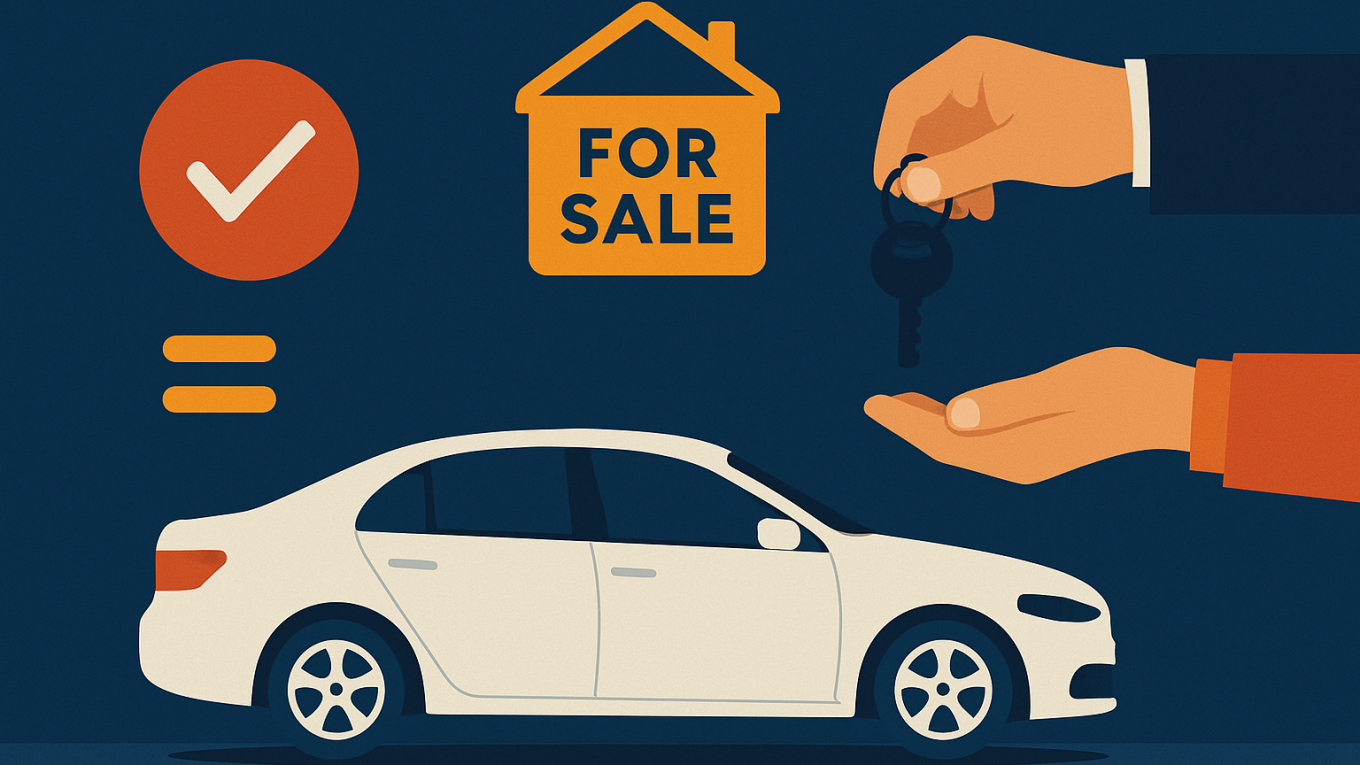Consumer Preferences in the Used-Car Market
The used-car market is a dynamic arena where buyers and sellers constantly gauge what a vehicle is worth. For everyday consumers, choosing a pre-owned car means juggling multiple considerations to find the best value. Among the many factors that come into play, four stand out for their powerful influence on demand and pricing: the car’s price, mileage, age, and trim level. Each of these elements can make or break a deal, shaping how attractive a vehicle is to potential buyers and how much it can command in the secondary market. In recent years, used-car prices have climbed to historic highs – in early 2025 the average 3-year-old used car sold for over $30,000, the first time in years it crossed that threshold. This surge in prices, combined with an aging vehicle fleet, has heightened the importance of understanding what consumers value most when shopping for a used car. While price is often the first thing on a buyer’s mind, mileage and age signal the car’s condition and remaining life, and the trim level (along with features) speaks to comfort and capability. In the discussion that follows, we break down how each factor influences consumer preferences and resale pricing in today’s used-car market.
Price and Affordability
It’s no surprise that price is usually the number one factor for car shoppers. Whether someone is hunting for a budget commuter or a nearly-new luxury SUV, the asking price will determine the pool of interested buyers. Surveys consistently show that, even alongside factors like make, model, or features, price is “clearly uppermost” in shoppers’ minds. Consumers typically set a budget and narrow their search to vehicles within that range, which means a car priced too high will simply be filtered out or ignored by many buyers. In practical terms, a well-priced used car generates stronger demand, while an overpriced one can linger on the market unsold. Dealers observe that competitively priced, in-demand models tend to sell quickly, whereas a car “priced too high… might sit on the market longer”. This reflects a basic truth: buyers compare similar cars and gravitate towards those that offer the best value for money. If two pre-owned sedans have comparable age, mileage, and features, but one is listed at $2,000 less, consumers will flock to the more affordable option.
Pricing in the used market is also about perceived fairness and bang for the buck. Shoppers often do their homework, using online tools to check market values and ensure the asking price aligns with a car’s condition and history. During times of market volatility, price becomes even more crucial. For example, when supply shortages and tariffs drove up used-car prices around 2024–2025, many buyers grew more price-sensitive, sometimes opting for older models or cars with higher mileage just to stay within budget. High financing costs in recent years have further pressured consumers to seek lower prices or better deals on used cars. On the flip side, sellers who set a reasonable price (or are willing to negotiate) will find a larger, more eager audience. Ultimately, affordability opens the door, but it’s the mix of price and quality that seals the deal – a balance savvy buyers and sellers both aim to achieve.
Mileage and Vehicle Age: The Condition Equation
Beyond the sticker price, mileage and age are perhaps the most obvious indicators of a used car’s condition and value. Generally, older cars with higher mileage carry lower prices than newer, low-mileage vehicles. Every extra year or thousand miles tends to chip away at a car’s value because they signal wear and tear, potential maintenance needs, and reduced remaining lifespan. However, the relationship between age and mileage is nuanced, and buyers pay close attention to both. Many shoppers weigh mileage versus age to gauge how “used” a car really is. For instance, an average driver puts on about 12,000–15,000 miles per year, so a 10-year-old car would be expected to have roughly 120,000–150,000 miles. If that 10-year-old car has, say, 200,000 miles, it’s been used far more than normal and buyers will assume it should be worth less or is more likely to have issues. Conversely, a decade-old vehicle with only 50,000 miles on the odometer stands out as unusually low-mileage and therefore more attractive, since it wasn’t driven as heavily. In this way, mileage can sometimes outweigh chronological age – a slightly older car that’s been gently driven can be seen as a better bet than a newer car that’s been run hard.
Age still matters in its own right. As cars age, they not only accumulate miles but also face time-related depreciation. Components wear out from years of use, and even factors like technology and styling can become outdated. In fact, the average age of cars on U.S. roads has been climbing (reaching a record 12.5 years as of 2023) because many owners held onto vehicles longer when new car prices soared. In the used market, though, an older model typically needs a lower price to attract buyers, unless it’s a sought-after classic. Depreciation hits hardest in the first few years of a car’s life, but it continues steadily as the vehicle gets older, with values dropping further for each additional year (barring rare vintage collectibles). Shoppers might worry about an older car’s reliability or the outdated safety features of a 10- or 15-year-old vehicle, affecting demand. This is where condition and maintenance history can tip the scales. A high-mileage or older car that was meticulously maintained with full service records can instill more confidence than one that’s simply “young” on paper but in rough shape. Still, as a rule, low mileage is a prized attribute – a car with far fewer miles than its peers is likely to “fetch higher prices” because it’s seen as less likely to have mechanical problems. On the other hand, very high mileage tends to be a red flag for buyers and is compensated for by a hefty price discount. In short, mileage and age serve as shorthand for a used car’s condition: buyers seek the youngest, lowest-mileage vehicle their money can buy, and sellers highlight these stats prominently when they are in a favorable range.
Trim Level and Features: The Value of Extras
Not all used cars are created equal – even among the same model, the trim level can significantly influence desirability and pricing. The trim level denotes the version of the car (base model, mid-range, top-of-the-line, etc.) and what features and options come with it. Higher trims often include things like larger engines, leather interiors, advanced safety tech, premium audio, or other upgrades, while lower trims are more basic. These differences that were built into the car when new continue to matter in the used market. A vehicle with more amenities or a better appearance can command a higher price because it offers more to the next owner. Desirable options can make a car more luxurious or practical, increasing its appeal and resale value. For example, a used car equipped with a panoramic sunroof, modern infotainment system, and driver-assistance features will stand out against a bare-bones version of the same model. Many used-car shoppers are willing to pay a bit more for these comforts and conveniences, especially since the premium for options is often less in a used car than it was when the car was new. In other words, higher trims and optional packages tend to hold some value in the resale market if they’re features people actually want.
That said, the impact of trim level on price isn’t always straightforward. Some features become ubiquitous or expected over time – for instance, if virtually every car today has a backup camera or Bluetooth, having those on a used car won’t add much extra value because buyers take them for granted. As one analysis noted, options that were standard on a trim don’t boost resale as much as rare upgrades do, simply because they’re common to most comparable vehicles. Also, a fully loaded lower trim might not resell for as much as one would expect if buyers instead prefer the prestige (or specific upgrades) of the official higher trim model. For example, suppose a particular SUV’s top trim originally cost $10,000 more than the base model. By the time they’re on the used lot, the price difference won’t be nearly that large – the original owner has absorbed most of that cost in depreciation. This creates an opportunity for used-car buyers: a loaded used car can be a relative bargain compared to adding options on a new one. Indeed, models with a big gap between base and highest trim in MSRP often see a significant, but smaller, gap in used prices. From the seller’s perspective, having a high trim or rare feature can be a selling point to justify a higher asking price, but only if it’s something the second-hand market values. Features tied to performance (like a more powerful engine in a sporty trim) or to comfort (like heated seats in a cold climate) tend to hold their value better than purely cosmetic extras. In summary, trim level shapes a used car’s identity and appeal: a top-trim vehicle with all the bells and whistles will attract buyers looking for a touch of luxury or performance in a pre-owned car, whereas a base model lures the most budget-conscious shoppers. Both find their place in the market, with price adjusting to reflect the added (or missing) features.
Driving the Deal Home: How to Balance Price, Mileage, Age, and Trim
When it comes to consumer preferences in the used-car market, price, mileage, age, and trim level each play a pivotal role in the decision-making process. Price often acts as the gatekeeper – if a car isn’t priced right, many buyers won’t give it a second look. But price alone doesn’t tell the whole story of a used car’s value. Mileage and age serve as quick reference points for a vehicle’s condition and longevity, heavily influencing how much a buyer is willing to pay. At the same time, the trim level and features determine how well a car meets a buyer’s desires for comfort, technology, and performance, shaping demand especially when comparing similar models. These factors are deeply interconnected: for example, a low-mileage, newer car can command a higher price, and a fair price can persuade buyers to consider a vehicle that might be older or lesser-trim if it still feels like a good deal. In today’s market – where used vehicles range from nearly new off-lease cars to decade-old budget rides – understanding how each factor impacts demand and pricing is invaluable for consumers. It empowers buyers to recognize a fair deal and prioritize what matters most to them, and it helps sellers set realistic prices by accounting for what buyers value. In the end, a successful used-car sale happens when the price is right and the car checks the right boxes for the buyer’s needs. By paying attention to mileage, age, and trim level alongside the bottom-line price, consumers can navigate the used-car landscape with confidence and find the ride that offers the best combination of affordability, reliability, and features for their money.

